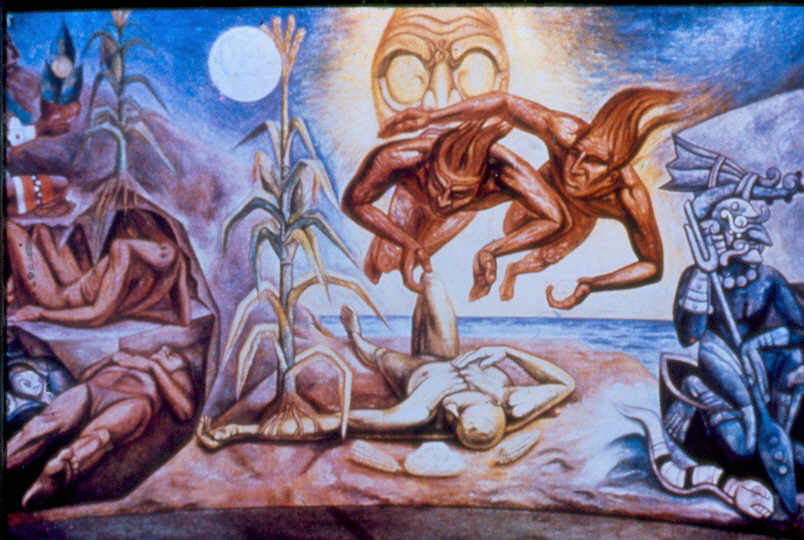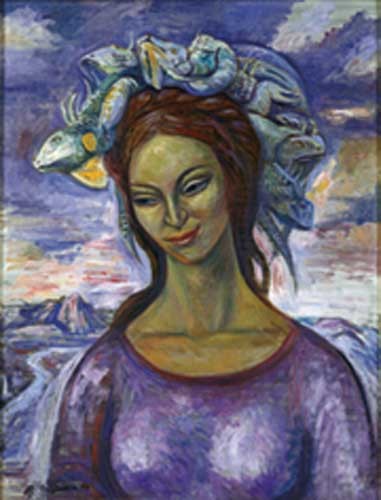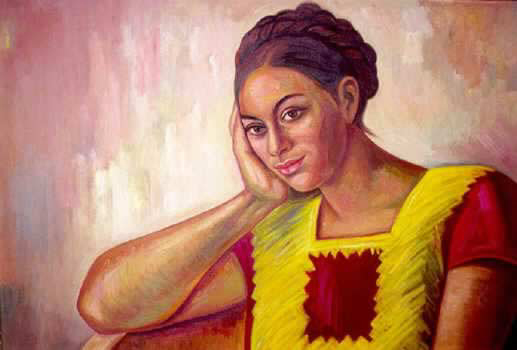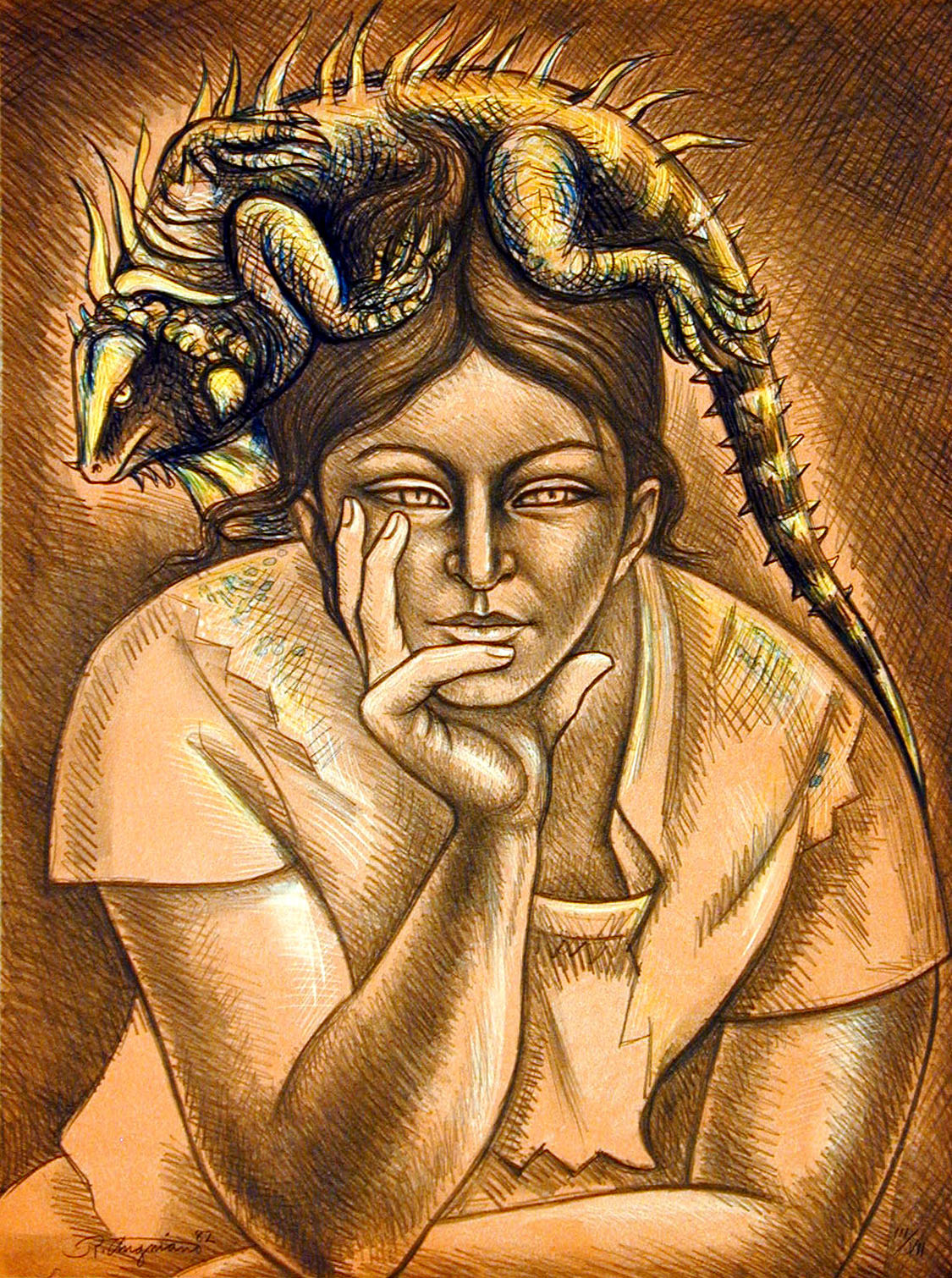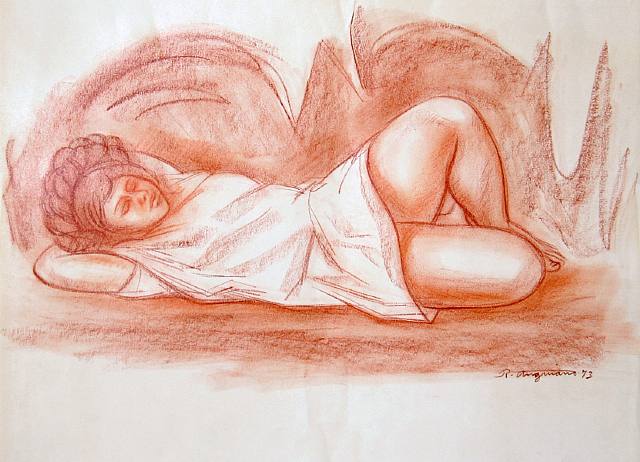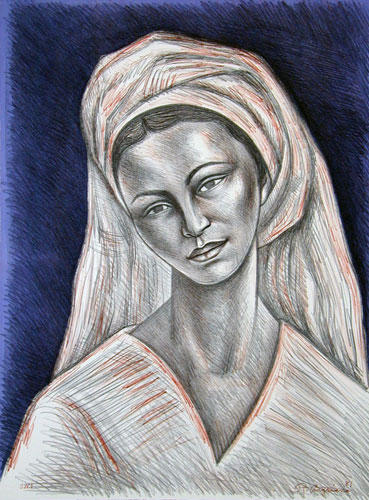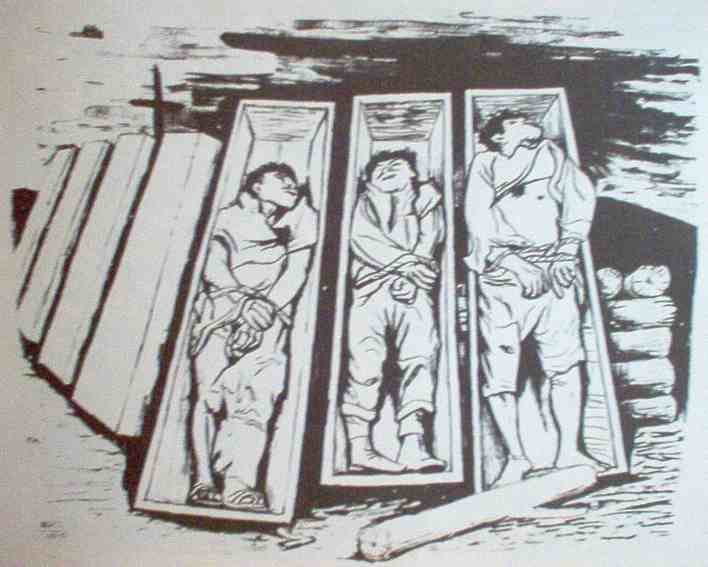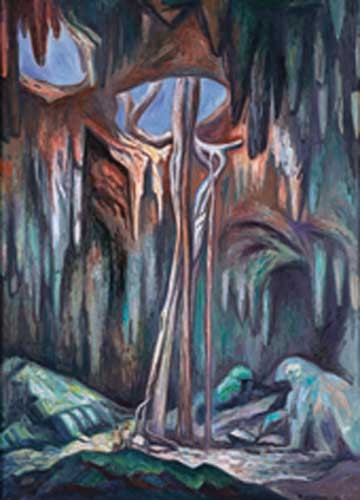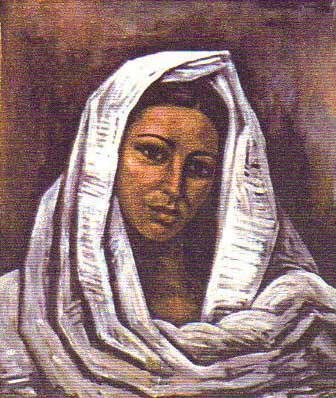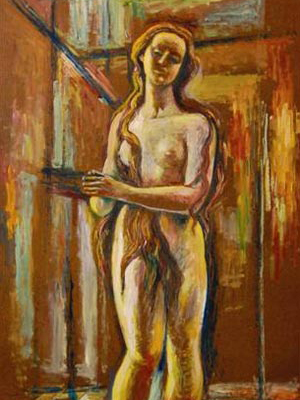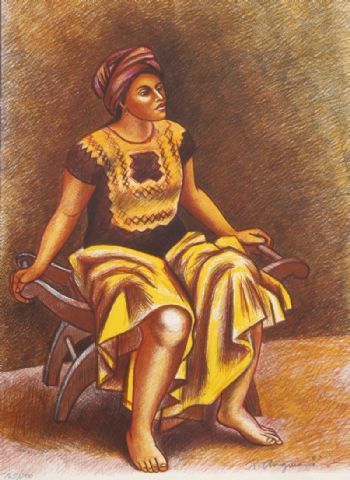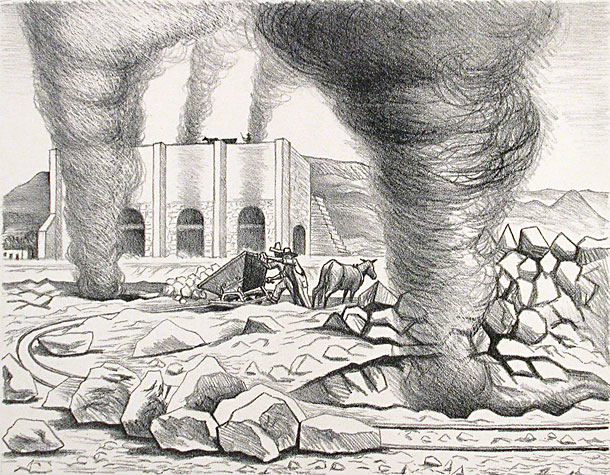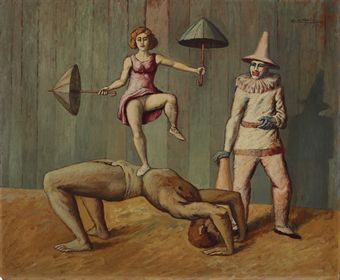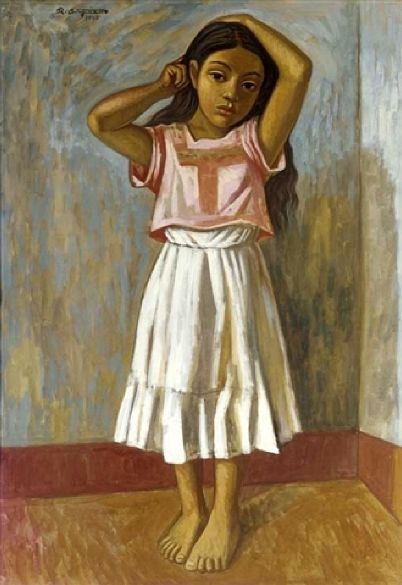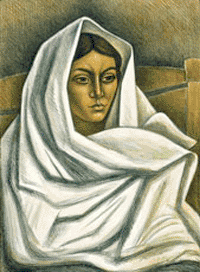<Back to Index>
- Painter Ramón Alva de la Canal, 1892
- Painter José Raúl Anguiano Valadez, 1915
PAGE SPONSOR
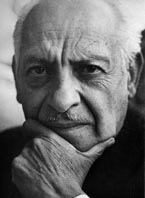
Ramón Alva de la Canal (b. Mexico City, August 29, 1892 – d. Mexico City, April 4, 1985) was a Mexican painter and illustrator.
Alva studied at the Academia de San Carlos, and assisted Alfredo Ramos Martínez in his open air painting school in Santa Anita, Iztacalco borough of Mexico City. After 1920 he taught painting at the Academia de San Carlos, and he became member of the Sindicato de Pintores. In 1922 he painted the first fresco of the 20th century in Mexico at the Colegio Grande, entitled “The Spanish Landing and Planting of the Cross on New Land”, and studied woodcut techniques under Jean Charlot. Together with others, he founded the ¡30 - 30! group in 1928, and became member of the "Estridentistas" movement, a group of artists and intellectuals, that coined the term of Stridentism (Estridentismo). Alva lectured at several schools, especially at schools of the Secretaría de Educación Pública (SEP), and became director of the sculpture school of the Universidad Veracruzana, Xalapa, at almost 60 years. His works include book illustrations, murals and panel paintings. He also worked as landscape painter, and became a member of the Academia de Artes in 1981.
In 1989 Javier Audirac filmed a documentary about him.
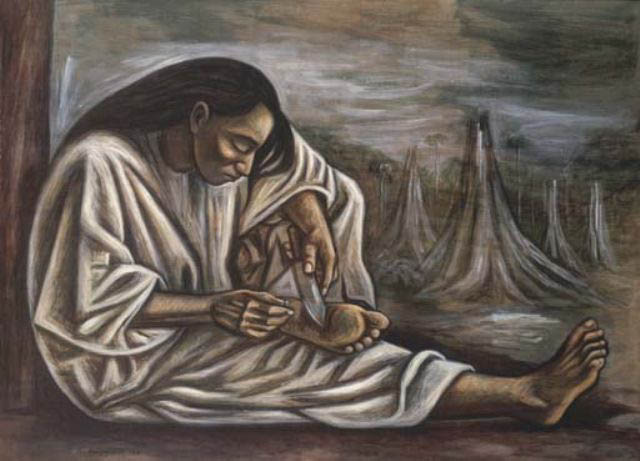
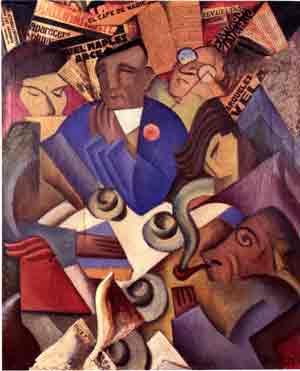
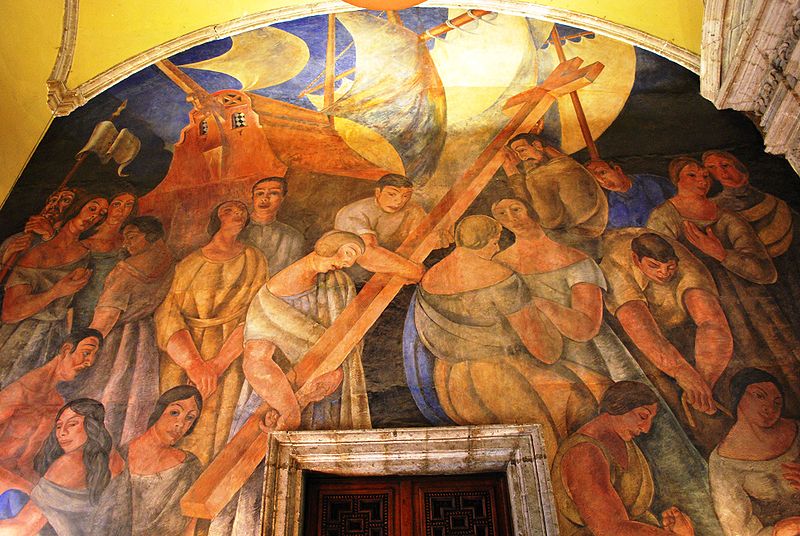
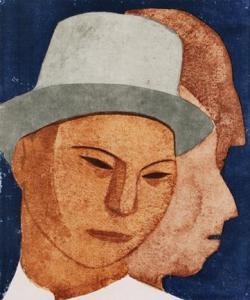
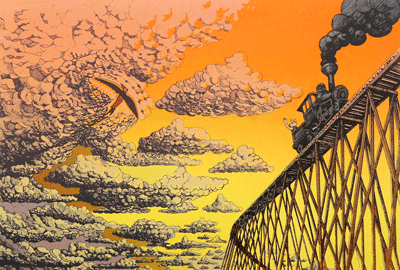
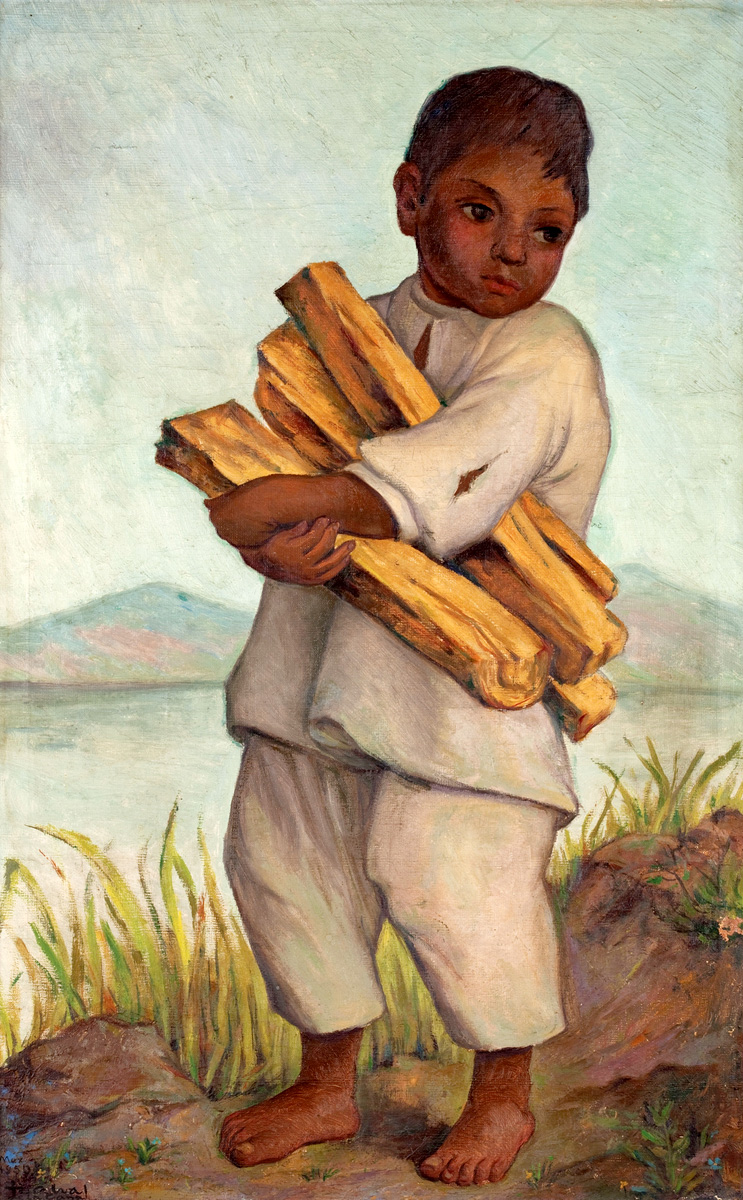
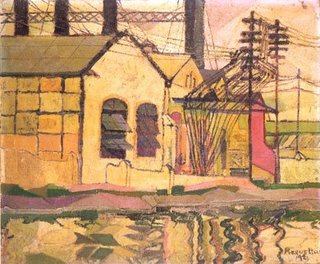
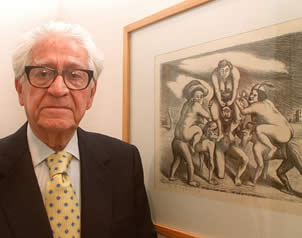
José Raúl Anguiano Valadez (February 26, 1915 – January 13, 2006) was a Mexican critical realist painter, draftsman, muralist, and engraver, as well as a member of the second generation of the so called "Mexican School of Painting" in Mexican art, along with Juan O'Gorman, Judith Gutierrez, Jorge González Camarena, José Chávez Morado, Alfredo Zalce, Jesús Guerrero Galván, Julio Castellanos, among others. Anguiano's work dealt with and reflected issues that affected Mexico and its people. His way of thinking was eclectic and anti sectarian, as reflected in his artistic expression.
His first solo exhibition was Raúl Anguiano y Máximo Pacheco at the Palacio de Bellas Artes (Palace of Fine Arts) in Mexico City in 1935. He would exhibit at that same location again in 1949 and 1982, and in countries worldwide, such as Brazil, Chile, Colombia, Cuba, France, Germany, Israel, Italy, Japan, Russia and the United States, throughout his career. He is arguably best known for his oil - on - canvas La Espina (National Museum of Art, Mexico City), La Llorona (Museum of Modern Art, New York), and for three murals commissioned in 1967 by the Museum of Anthropology and History in Mexico City. His work is in the collections of renowned museums in Mexico City, New York, California, Beijing, Brussels, Warsaw, Rome, among others.
Raúl Anguiano was born in Guadalajara, Jalisco. Son of Abigail Valadez and José Anguiano, he was the first of eight children. As a child he spent long periods of time drawing, copying portraits of movie stars that he admired or photographs that his father had taken during the Mexican Revolution. His first aesthetic influence was a black - and - white print by Italian Master Raphael. The work, titled the Holy Family, reaffirmed his interest in a rigorous, classical, Italian style.
At age 12, Anguiano entered the Free School of Painting at the Museum of the state of Jalisco, in Guadalajara, where he began drawing his surroundings and copying from prints of Michelangelo's Last Judgement, Stanze di Raffaello (Italian for "Raphael's rooms"), works in the museum, and live models. Being the youngest in class, he was nicknamed "Rafaelito", or small Raphael. Upon entering preparatory school at age 13, Anguiano met drawing instructor José Vizcarra, who discovered Anguiano's talent and offered to train him at no cost.
In an attempt to abandon academic training and find his own path, Anguiano joined a group of artists and intellectuals named Bandera de Provincias at the age of 15. The group was often visited by well known artists such as Mexican architect Luis Barragán. The group published a magazine by the same name, organized conferences and painting and sculpture exhibitions, in which Anguiano participated (often with oils on board because he could not afford linen). The group had a strong impact on Anguiano's intellectual development; it introduced him to important reading materials such as Giacomo Leopardi's Dialogues, Niccolò Machiavelli's The Prince, Magic Realism by Franz Roh, and Exemplary Lives by Romain Rolland (the latter being the most influential to the artist). He was also interested in the poetry of Comte de Lautréamont, Paul Marie Verlaine, Edgar Allan Poe, Charles Baudelaire and Arthur Rimbaud.
Anguiano's family became impoverished when his father neglected his shoe making business to participate in politics, activity that offered no financial reward. This forced the artist to become a drawing teacher in Guadalajara's primary schools at age 17, leaving little time for drawing and painting. Anguiano and his friends rented a studio, where friends and workers in need of cash posed for them. He often remembered "La Chala", a woman with Asian traits and long, straight hair. This physical type is seen throughout his oeuvre.
Upon
losing his job as a drawing teacher and considering his family's
financial situation, Anguiano moved to Mexico City in 1934, where he
lived with family members. Because he befriended several revolutionaries
(Mexican artist Jesús Guerrero Galván among them) and
began drifting away from provincialism and moving toward a more radical
ideology, finding a job proved to be difficult. He was interested in the
work of Mexican muralists Diego Rivera, José Clemente Orozco, and David Alfaro Siqueiros (all of revolutionary ideas), in social and economic issues, workers’ movements and unions, in the Russian revolution,
etc. In 1936 he became Secretary General of the Fine Arts Professors
Union – having joined the Fine Arts Workers Alliance, Anguiano had easy
access to bureaucratic positions.
Anguiano began his career as a muralist in 1936 with two works, Revolución and Contrarevolución, both in the Revolutionary Confederation of Labor of the state of Michoacán, in the city of Morelia. While still employing typically Mexican techniques, Anguiano also adopted some of the improved and diversified processes behind the work of Diego Rivera and José Clemente Orozco. He painted several murals under the commission of important institutions such as the National Chamber of Commerce and the National Museum of Anthropology.
In the 1930s and 40s, Anguiano created drawings and paintings of a fantastic quality, as well as murals, drawings, and banners of clear political content. During that time he often visited the "low" neighborhoods, circuses and cabarets, and made several works based on his experiences there. From 1936 to 1942 Anguiano created what he considered to be some of his most interesting works, among them being La Llorona, later acquired by the Museum of Modern Art, New York. His painting in the 1940s is characterized by gray and white tones, and by the sobriety of his subjects. Some consider this one to be one of his best artistic periods.
Among his many activities, Anguiano joined the Federation of Writers and Proletarian Artists (FEAP), and later the League of Writers and Revolutionary Artists (LEAR),
through which he met other artists and intellectuals who influenced his
development (members were painters Alfredo Zalce, Chávez Morado,
and Nobel Prize winner Octavio Paz,
among others), participated in cultural brigades, strikes, mural
painting, exhibition planning, book publication, etc. The
bureaucratization of the LEAR by several opportunistic members
encouraged artists Raúl Anguiano, Leopoldo Méndez, Alfredo Zalce, and Pablo O'Higgins to found the Taller de Grafica Popular (Popular
Graphics Workshop), which supported striving workers and peasants,
worked for better salaries, ample education, and stood against war and
fascism. The workshop was based on Mexico's popular traditions (it had
not been long since engraver José Guadalupe Posada's art had been rediscovered and exalted) and yet had ties to the art and artists of the world.
In his last years of life, he joined "La Pandilla" with renowned plastic artists like Jose Sacal and Miguel Cubiles
In 1940 Anguiano visited New York for the first time. With the help of artist Stefan Hirsch, he was granted a scholarship at the Art Students League, where he studied for two months. Living in a cold Greenwich Village apartment, Anguiano painted in the morning, visited galleries and museums in the afternoon, and returned to painting at night.
His daily visits to New York's many galleries and museums left long lasting impressions on him. Particularly influential was the work of Paul Cézanne, El Greco, Diego Velázquez, Tintoretto, Rembrandt, Pablo Picasso, and Vincent van Gogh. As a result, his technique, color and composition changed. This stylistic transformation is evident in portraits and compositional paintings such as the Retrato de María Asúnsolo (portrait of María Asúnsolo), selected for the exhibition Retratos del Siglo XX at the Museum of Modern Art in New York. Greek - Egyptian engraving was also important in that it opened his eyes to a more universal view of art.
All
the work produced during his stay in New York, as well as works he had
brought from Mexico, were left at the Blanche Bonestell Gallery.
Anguiano never received financial compensation for those works; neither
did he ever see them again.
At the end of February 1941 Anguiano boarded a ship headed to the port of Veracruz. Upon his return, he began teaching nude figure drawing at the National Institute of Fine Arts’ (INBA) La Esmeralda, painting and sculpture school in Mexico City.
In 1945 Anguiano joined the Mexican Society of Lectures and Studies, through which he participated in conferences and exhibitions.
In 1949 Anguiano was invited to participate in an expedition to the archeological zone of Bonampak in the Mexican state of Chiapas. Fotographer Manuel Álvarez Bravo was among the several travel companions. Despite the potential dangers of embarking in such a trip (two expedition members drowned in the Lacanjá river while at work), Anguiano accepted and greatly benefited from it, gathering information that would materialize in over two years of work and an exhibition at the Salón de la Plástica Mexicana in Mexico City. Anguiano became increasingly interested in the lives of the locals, particularly the lacandones, Indigenous Native American Maya people, and eventually published a diary on the Lacandonan jungle, which includes a series of drawings and paintings depicting the Lacandonan people, their customs, and their mysterious and imposing environment.
Anguiano
was in Los Angeles, California, when he began feeling ill and asked his
wife, Brigita, to take him back to Mexico. He was flown to Mexico in a
presidential jet and admitted to Mexico City's Central Military Hospital
with heart problems. He died on a Friday night at age 90. A ceremony was
held at the Palace of Fine Arts in
Mexico City the morning after his death. He left three children:
Carmen, Marina and Pablo. He also had two stepchildren by wife Brigita:
Lynda and Mark.
